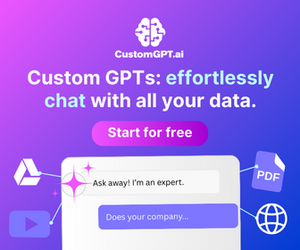-
Table of Contents
- How to Train AI for Specific Tasks
- Understanding the Basics of AI Training
- Defining the Task Clearly
- Steps to Define Your AI Task
- Collecting and Preparing Data
- Best Practices for Data Preparation
- Choosing the Right Model Architecture
- Popular Model Architectures
- Training and Fine-Tuning the Model
- Tips for Effective Training
How to Train AI for Specific Tasks

How to train AI for specific tasks is a question that has puzzled many developers, researchers, and businesses. Whether you’re building a chatbot, optimizing supply chains, or creating a recommendation system, the process requires careful planning, the right tools, and a deep understanding of the task at hand. This article will guide you through the essential steps, provide practical examples, and share insights to help you succeed in training AI effectively.
Understanding the Basics of AI Training
Before diving into the specifics, it’s crucial to understand the foundational concepts of AI training. AI models learn from data, and the quality of this data directly impacts their performance. Training involves feeding the model labeled or unlabeled data, depending on the task, and adjusting its parameters to minimize errors.
- Supervised Learning: The model learns from labeled data, where each input has a corresponding output. For example, training a model to recognize cats in images.
- Unsupervised Learning: The model identifies patterns in unlabeled data. Clustering customer segments is a common use case.
- Reinforcement Learning: The model learns by interacting with an environment and receiving rewards or penalties. This is often used in robotics and gaming.
Understanding these methods will help you choose the right approach for your specific task. For more details on AI learning methods, check out our article on Types of Machine Learning.
Defining the Task Clearly
One of the most common mistakes in AI training is not defining the task clearly. A vague objective can lead to poor results and wasted resources. Start by asking yourself: What problem am I trying to solve? What are the inputs and outputs? How will success be measured?
For instance, if you’re training an AI to detect fraud in financial transactions, define the specific types of fraud, the data sources, and the accuracy metrics. A well-defined task ensures that your AI model stays focused and delivers meaningful results.
Steps to Define Your AI Task
- Identify the problem and its scope.
- Determine the input data and expected outputs.
- Set clear performance metrics (e.g., accuracy, precision, recall).
- Consider potential challenges and constraints.
By following these steps, you’ll create a solid foundation for your AI training process. For more tips on defining AI tasks, visit Defining AI Tasks.
Collecting and Preparing Data
Data is the lifeblood of AI training. Without high-quality data, even the most advanced algorithms will fail. Start by collecting relevant data that aligns with your task. Ensure that the data is diverse, representative, and free from biases.
Once collected, preprocess the data to make it suitable for training. This may involve cleaning, normalizing, and augmenting the data. For example, if you’re training an AI to recognize handwritten digits, you might need to resize images and convert them to grayscale.
Best Practices for Data Preparation
- Remove duplicates and irrelevant data points.
- Handle missing values through imputation or removal.
- Normalize or standardize data for consistency.
- Augment data to increase diversity (e.g., flipping images).
Proper data preparation can significantly improve your AI model’s performance. For a deeper dive into data preprocessing, check out Data Preprocessing Guide.
Choosing the Right Model Architecture
Selecting the appropriate model architecture is critical for training AI effectively. The choice depends on the complexity of the task, the type of data, and the desired outcomes. For simple tasks, linear regression or decision trees might suffice. For more complex tasks, deep learning models like convolutional neural networks (CNNs) or recurrent neural networks (RNNs) are often used.
For example, if you’re training an AI to generate text, a transformer-based model like GPT-3 would be ideal. On the other hand, image classification tasks typically benefit from CNNs. Experiment with different architectures to find the best fit for your task.
Popular Model Architectures
- Linear Models: Simple and interpretable, suitable for regression and classification tasks.
- Decision Trees: Effective for structured data and feature importance analysis.
- Neural Networks: Versatile and powerful, ideal for complex tasks like image and speech recognition.
- Transformers: State-of-the-art for natural language processing tasks.
Choosing the right architecture can make or break your AI project. For more insights, explore Choosing AI Models.
Training and Fine-Tuning the Model
Once you’ve prepared the data and selected the model, it’s time to train it. Start by splitting the data into training, validation, and test sets. Use the training set to teach the model, the validation set to tune hyperparameters, and the test set to evaluate performance.
During training, monitor metrics like loss and accuracy to ensure the model is learning effectively. If the model underperforms, consider adjusting hyperparameters, increasing the dataset size, or using techniques like transfer learning. For instance, fine-tuning a pre-trained model like BERT can save time and resources while achieving excellent results.
Tips for Effective Training
- Use early stopping to prevent overfitting.
- Experiment with different learning rates and optimizers.
- Leverage transfer learning for complex tasks.
- Regular



Leave a Reply